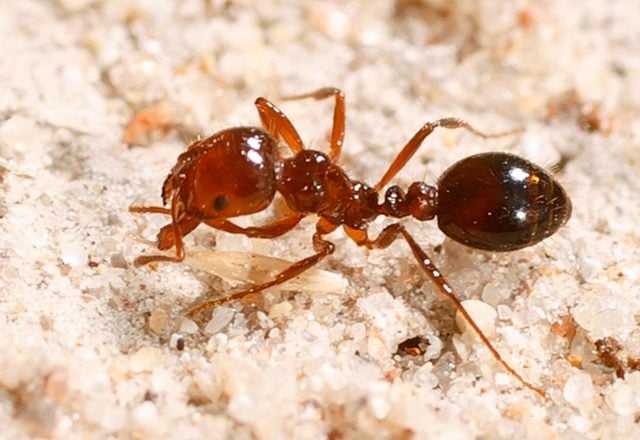
In November 2014, the Commonwealth Department of Agriculture staff at Port Botany detected Red Imported Fire Ants (RIFA) during routine surveillance.
RIFA, Solenopsis invicta, is a serious public nuisance and pest of agriculture in South America and the United States of America and is known to be highly aggressive and invasive and can inflict painful stings on people, pets and livestock.
These ants have been found in areas on south-east Queensland and the NSW Department of Primary Industries (DPI) has alerted livestock owners to this biosecurity risk, urging all to ensure hay and feed from the area is free of RIFA.
NSW DPI Invasive Plants and Animals director, Andrew Sanger, said the National Red Imported Fire Ant Eradication Program intercepted a truck carrying infested bales of uncertified hay, which had travelled hundreds of kilometres outside the fire ant biosecurity zone in Queensland.
Dr Sanger says that if stockfeed comes from a fire ant infested area, both the farmer and supplier need to ensure risk mitigation measures have been followed. ‘Hay from the infested area must have a Plant Health Certificate which verifies it meets the strict conditions required to import hay into NSW from the fire ant biosecurity zone,’ he said.
The Plant Health Certificate must certify:
· the hay or straw bales have been inspected and found to be dry and free of all soil
· the hay or straw bales have been treated with an APVMA approved chemical for the control of tramp ants in accordance with all label directions and permit conditions, and
· immediately following treatment, the hay or straw bales have been handled and stored in a manner that prevents infestation by tramp ants.
Hay or straw bales must remain in conditions which prevent tramp ant infestation until arrival in NSW.
Hay produced within the south-east Queensland fire ant biosecurity zone must comply with these requirements.
Red imported fire ants pose a significant agricultural and environmental biosecurity risk. They are aggressive, highly-adaptive and well-equipped for survival in Australian conditions.
The National Red Imported Fire Ant Eradication Program aims to eradicate the pest from Australia through a 10-year plan.
NSW biosecurity legislation has strict entry conditions for mulch, potted plants, turf and agricultural and earth moving equipment moving into NSW from the Queensland fire ant biosecurity zone.
More information is available from NSW DPI: https://www.dpi.nsw.gov.au/biosecurity/insect-pests/fire-ants
Exotic ants should be reported to the biosecurity hotline: 1800 680 244
South-east Queensland red imported fire ant Interstate Plant Quarantine Zone:
https://www.daf.qld.gov.au/__data/assets/pdf_file/0004/58153/RIFA_IPQ_SEQ.pdf.




A good intercept of a threat and a timely warning to be very careful.
These ants are a slow motion ecological disaster.
So far they have resisted massive eradication and containment efforts.
They’re already listed as a Key Threatening Process to biodiversity, so it will just add another layer of threats to ecosystems and species already stressed to the point of collapse by drought and fire and climate change.